As the pandemic nightmare draws on without an end, the last trade event seems to have been held lifetime back. But one's finally happening, later this month: the ITMA-Asia CITME. Fibre2Fashion presents an event preview
The covid-19 pandemic may have dragged on for just about a year, but what it has left in its wake is sheer devastation. No land has escaped its rage, and no peoples have been left untouched. Trade events, that all in industry looked forward to, not just to stay updated about trends but also to anticipate directions that technology would take in the next few years ahead, have been cancelled one after the other. As the second wave of the pandemic throttles many countries in its vice-like grip and some only beginning to emerge battered from it, there's an event coming up this month.
The five-day ITMA ASIA CITME 2020 gets under way at the National Exhibition and Convention Center in Shanghai, China. The same country that was the first to go under the virus in late 2019 and early 2020. China has controlled the pandemic well, and is now set to host the first big trade event since industry life had grinded to a halt. ITMA ASIA CITME was to have been held last year. The year is different, but the nomenclature remains the same in the signage.
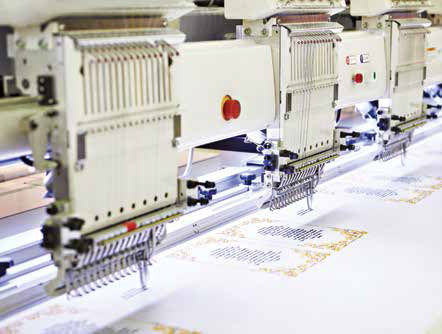
The Pandemic Effect
The way one might have looked at ITMA ASIA CITME last year, had it been business as usual, is just not the way one would look at it now. The world has changed, as has industry.
Trade events are extremely important for textile machinery manufacturers. With so many events being cancelled around the world since the pandemic, machinery manufacturers were hit hard.
Most of the textile machinery fairs where Picanol, an extremely diversified industrial group with a large footprint in textiles, would have had a physical presence in 2020 were cancelled or postponed to 2021. Against this background, says Erwin Devloo, marketing communication manager of the group, "Picanol increased its online efforts on its website, app and social media in 2020. In addition, for the first time in our history, a brand new airjet weaving machine was launched virtually. The new TerryPlus-i is the market's most efficient and versatile airjet weaving machine for terry cloth. With this launch, Picanol set a new standard in terry cloth weaving. The TerryPlus-i distinguishes itself by, among other things, providing the highest industrial speeds on the market, combined with the best fabric quality and the most complex terry designs."
The pandemic led Truetzschler Nonwovens to invest more into online marketing and online events because of travel restrictions and the lack of face-to-face meetings.
C Maennich, area sales manager for Truetzschler Nonwovens & Man-Made Fibers GmbH in India, says that for existing clients Truetzschler has established a robust online support system to service, and technical support is still ensured. "Fortunately, Truetzschler has strong ties with local agencies, such as ATE in India. With the support of ATE, Truetzschler was in close contact with customers and ensured our brand visibility for new potential customers in the Indian market.
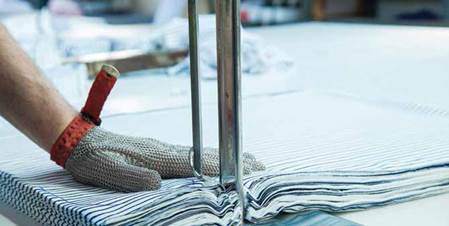
"Despite the pandemic, the nonwoven sector saw solid growth during the last year until today. In fact, covid-19 has caused a surge in nonwovens for disinfection and medical applications. Therefore, Truetzschler Nonwovens order intake has been robust despite the difficult global economy."
For Italian manufacturer Mesdan, exhibitions and live contacts remained the main pivot of information exchange and news diffusion. Dejan Lalevic, sales director, says, "We adapted ourselves to the new situation activating other communication channels though we look forward to soonest reactivate direct relationships we used to have before the pandemic."
But things have been changing even as the pandemic kept spreading. In the special field of machinery manufacturing for the nonwovens industry, the general situation has "changed completely" since September 2020 when many orders have been given to DiloGroup from the range of customers-existing and new-for complete plants in different nonwovens sectors.
Says Johann-Philipp Dilo, chief executive officer of the DiloGroup, "This very positive development has altered completely the picture after spring and summer 2020 and has allowed us to go back to normal operations. Of course, we observe there are still some supply chain issues, but we are confident of overcoming those by flexible reactions from a large range of suppliers from Germany and elsewhere in Europe. We are, therefore, very optimistic about the future particularly when the pandemic will have been overcome completely."
Companies had to think on their feet. They still need to foresee trends even as the realities of the present changed by the day. There were incessant news reports about consumer habits were changing, and how purchase behaviours might impact manufacturing itself.
Says Lalevic, "A diffused belief is that the garment market will take off only once the consumers restore their old habits, but it's also true that the pandemic left an indelible sign on such habits, on both the level and structure. Textiles are an extremely wide field; hence what may be valid for few segments may not be applicable for others. Unlike regular clothing, the production of technical yarns, performance fabrics, nonwovens and other similar products are increasing. We do notice such trend by our yarn splicers market, an increasing demand for splicers for technical yarns (such as carbon, glassfibre, aramids, etc). The same is confirmed with the demand of our testing equipment, more in the field of performance testing and R&D (like sportswear and uniforms), technical applications and less in respect to the traditional testing."
He continues, "In parallel with the pandemic, we are witnessing an increase of concern towards the circular economy; hence, recycling and development of new materials, especially from natural fibres and their blending. This has triggered a conspicuous increase of demand for our mini-spinning line system. We look at the future with optimism hoping to be able to meet as much as possible the new changes and its opportunities." Mesdan has the numbers to indicate a recovery. Informs Lalevic: "From our recent sales records, we can say that some countries almost restored its textile activities to a pre-pandemic level. We registered good 2021 Q1 results and expect this to continue in Q2. For Q3/Q4, it is still difficult to predict. In fact, the whole Savio group registered positive trends and achieved very good results."
Plus, the pandemic came with its own set of lessons. Says Dilo: "I do not look differently at the future when general development is concerned. Nevertheless, the pandemic has given us a lesson in a way that we can save time and energy in travelling by more state-of-the-art video communications."
The Issue of Adaptation
While the ability to think on one's feet might have saved the day for some, or even many, that does not mean that the turbulence is over. Companies would still need to re-think a lot. Investments in textile machinery are done keeping the next 3-5 years in mind. So, will buyers now think more in terms of short-term investments, given that one full year was lost to the pandemic?
For Picanol, the year 2020 had started on a positive outlook. Says Devloo: "After the strong growth of the order book in Suzhou (Picanol's plant in China) at the end of 2019, orders in Ieper (Belgium) were also increasing strongly, leading to preparations for an increase in production capacity at both locations."
However, due to the impact of the covid-19 pandemic on the global machinery market, Picanol was then faced with a stagnating global demand for weaving machines. "A gradual market recovery started in the second half of the year, with a very strong fourth quarter for the Suzhou plant. By the end of 2020, there was also a clear increase in incoming orders in Ieper. Further capacity expansions were prepared, both in Ieper and Suzhou. The pandemic also illustrated some of our strengths: we were able to quickly restart production in Suzhou and Ieper. The presence of our own local teams in important textile countries also made it possible for us to stay close to our customers in terms of sales and service, despite the travel restrictions in place."
In case of the DiloGroup, says Dilo, "Our business being a supply for complete production lines as a general contractor is based on long-term investment planning of our customers. When large investments have to be paid off during longer periods of time, short?term investments usually are not part of this consideration."
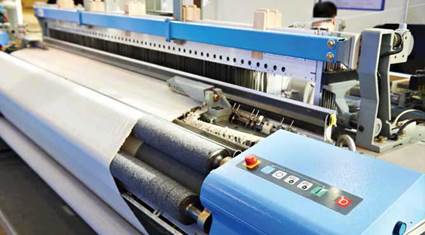
Truetzschler Nonwovens is expecting a robust post-pandemic growth. "The demand for production machinery for personal protective equipment and disinfectant wipes has been fulfilled. Now we expect nonwoven markets worldwide to pick up the idea of sustainability. In particular, Truetzschler Nonwovens and partner company Voith see growth potential in the area of bio-degradable and sustainable nonwovens for single use products such as baby and body wipes," feels Maennich.
Lalevic agrees that the pandemic left a great impact on all aspects of the economy (logistics, trade, production, commissioning, transport, sourcing, etc). In many market segments, almost one year was lost. Now, we can see that several 2020 projects which were frozen eventually took off in the first quarter of 2021-a very positive sign."
Innovations will continue in the digitised world, more than before.
Picanol expects the order book to improve in the first half of 2021, compared to the previous year. However, it remains difficult to estimate the impact of covid-19 and some geopolitical uncertainties. Underlines Devloo: "In 2021, Picanol will keep building on its technological leadership by extending its weaving machine product range and offering applications for new market segments. The main challenges continue to be the further strengthening of (weaving) performance, product quality and service, as well as helping to strengthen the customers' cost competitiveness-and to do all of this in the most sustainable way. At the same time, previous initiatives on connectivity and digitalisation will continue undiminished. In the areas of product development, sourcing, and assembly, Picanol will intensify its efforts to further improve both productivity and process efficiency."
The Truetzschler Group is heavily into Industry 4.0. Maennich says: "We could quickly scale capabilities such as remote service and remote monitoring during the pandemic. Truetzschler Nonwovens started digitalisation of operator interfaces and data collection for production systems last year. The year 2020 was a catalyst to speed up the existing efforts for a digital future of the nonwovens industry."
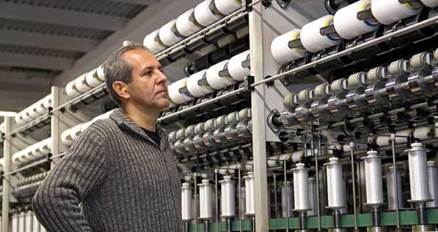
Future-Proofing Beyond The Pandemic
Future-proofing a business is now seen as something fundamental. But the covid-19 pandemic has added a new dimension to this idea altogether. Industry associations have a slightly different take.
First, since machinery requires a lot of investment, how are buyers going to look at future-proofing in terms of machinery? Will companies be averse to make huge investments?
The president of the Association of Italian Textile Machinery Manufacturers (Acimit), Alessandro Zucchi, says, "Future proofing should be a best practice in all industrial sectors and in several areas including electronics, industrial design and climate change. Machinery, and textile ones in particular, will have to provide answers to the great issues of the future. The sustainability of processes and
products, for example, must be considered by textile companies who want to remain competitive in the future. And so, they will have to invest in this sense."
But, how are machinery manufacturers going to go into developing new products?
Adds Zucchi: "Textile machinery manufacturers are, in turn, like their customers, committed to designing machines that meet the challenges of the future: sustainability of products, their recyclability and the full digital transformation of production processes."
Alejandro Gallego, business unit director (industrial and textile technology) at AMEC AMTEX, the Spanish Textile Machinery Manufacturers Association, says: "Buyers will be focused on making their investments profitable. Textile products are present in a wide variety of sectors, and depending on the profitability of this sectors, the level of service demanded by their clients, companies will have to adapt with the state-of-art textile machinery.

"Machinery manufacturers are working with their R&D departments on a daily basis. This is why companies are always responding to the textile manufacturer needs with updated machinery. I think that they will go down to analyse their cost-efficiency and become leaner in order to face the high level of uncertainty that we are living with. But then, they will never save costs on their assets related to competitiveness and sales service."
Meanwhile, the importance of robots/robotics seems to have gained traction in the backdrop of the pandemic. The scope is enormous. What kind of R&D initiatives will we see in this area?
Zucchi thinks R&D activity has always characterised the business of textile machinery manufacturers. "However, no distinction can be made between the different segments of the textile production processes. Rather, we can see, at least among Italian companies, a strong commitment to complete the digitisation of various company areas-first and foremost that of customer service and machinery maintenance. In this framework, there is no doubt that also in the future the contribution of human resources remains fundamental, whose skills are indispensable for the digital transformation to be carried out in the best possible way."
Gallego adds a different dimension: "Finishing has a big challenge ahead, being in line with sustainability and is being improved. Digitalisation can help to control and save a big part of the water use, and also help other technologies to be applied like laser. I see also a big impact of robotics in the improvement of spinning and knitting processes, which can be applied to product manufacturing efficiency. Looms have been experiencing very good improvements, and I think the rest of machines involved in the textile manufacturing process can follow their lead."
This article was first published in the June 2021 edition of the print magazine.



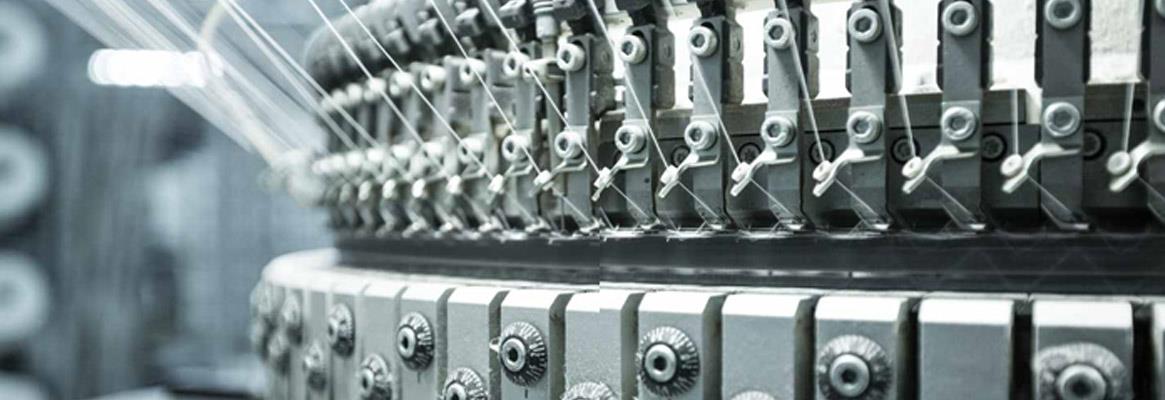
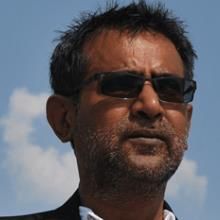




Comments